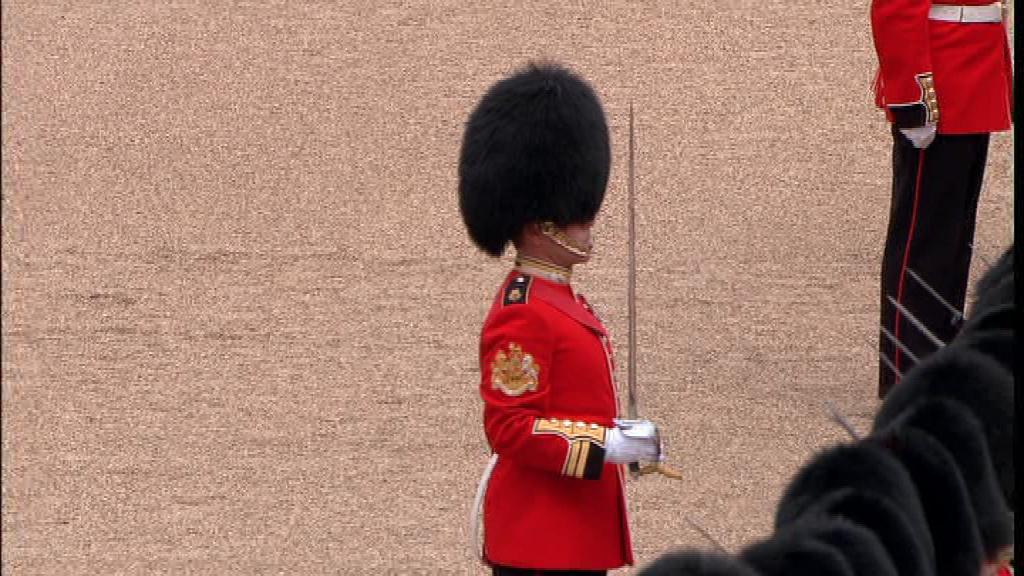
The Trooping of the Colour

An orderly crosses the approach road to take the pace stick from the Regimental Sergeant Major who draws his sword, the only time an RSM will do so, in peacetime, is on a parade where a Colour is trooped.
The 'Escort For the Colour' marches off in quick time to the tune the 'British Grenadiers'. No matter which regiment's colour is being trooped, the 'British Grenadiers' is always used at this point in the parade because the right flank company of every battalion used to be a grenadier company.
The Escort marks time whilst the Massed Bands clear the line of march. The Subaltern is now looking for a small white stone 15 paces from the Colour Party where he will halt the Escort.
The RSM marches from the rear of the Escort, sword drawn in symbolic protection of the Colour. He is followed forward by the 'Ensign For the Colour' who will carry the Colour through the ranks of assembled guardsmen.
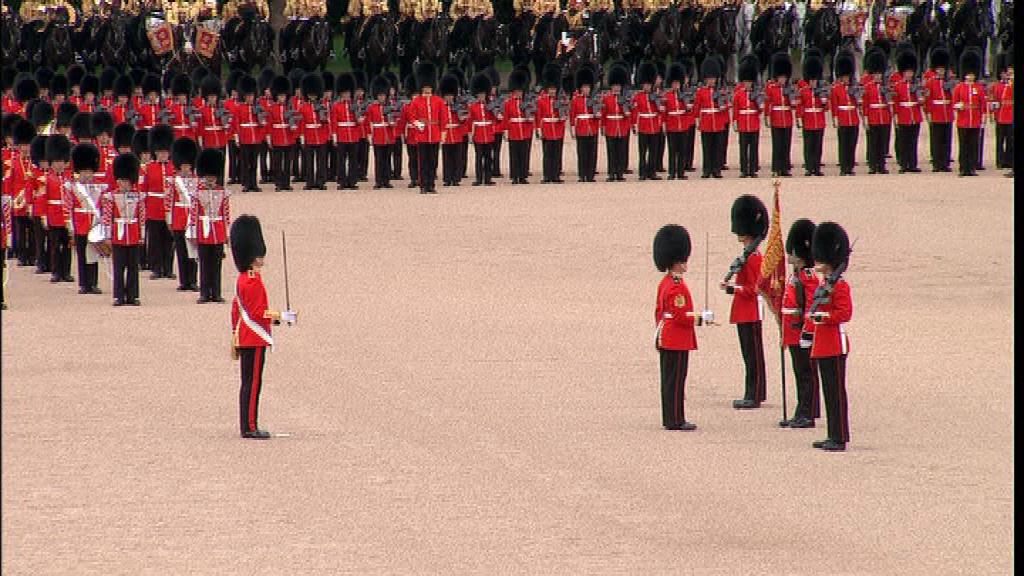
The RSM salutes the Colour, takes a pace forward, receives the Colour in his left hand from the Sergeant of the Colour Party.
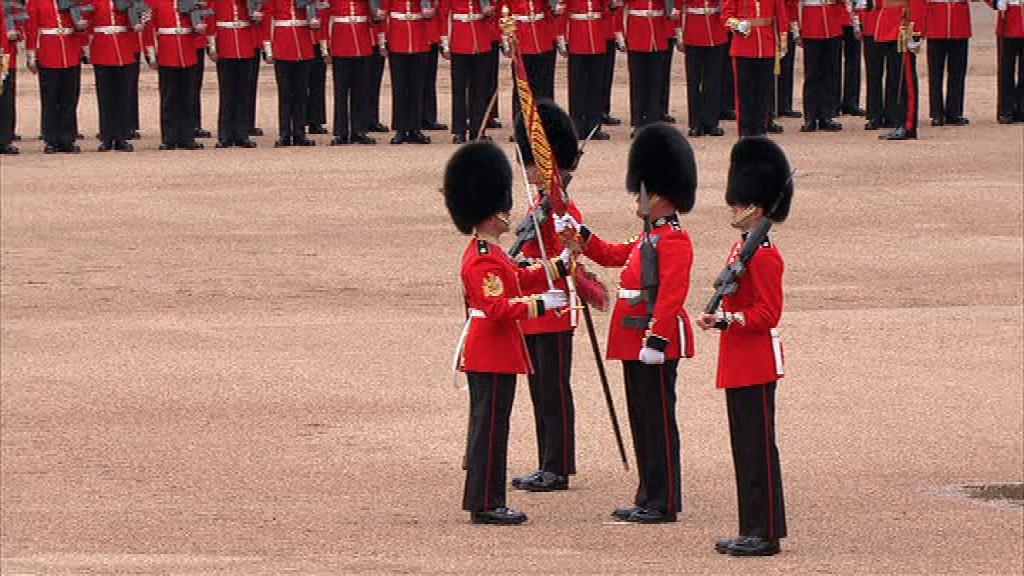
In turn the Ensign salutes the Colour, sheathes his sword, receives the Colour and places it in his colour belt. He then turns and shows the Colour which will be trooped.
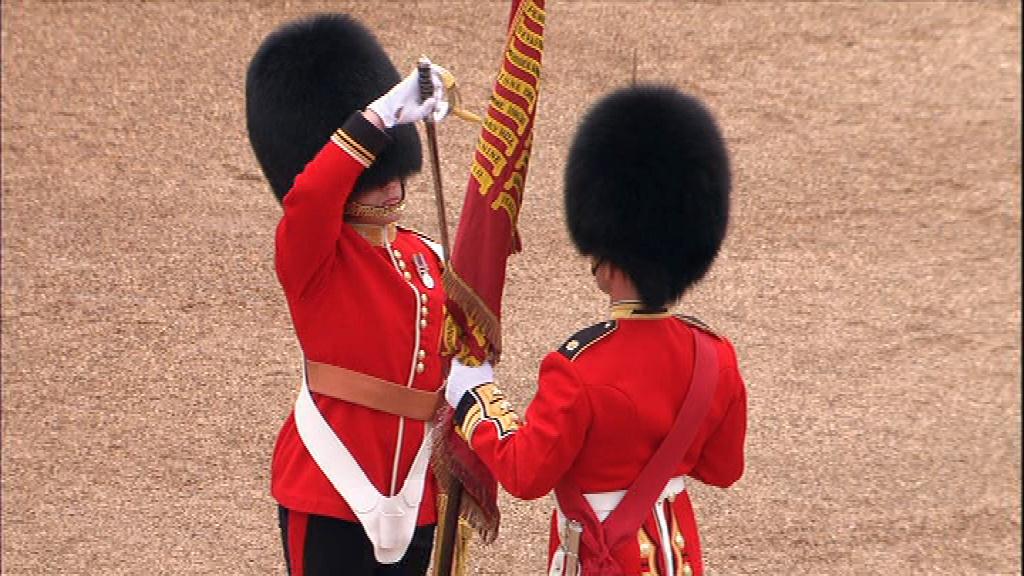 |
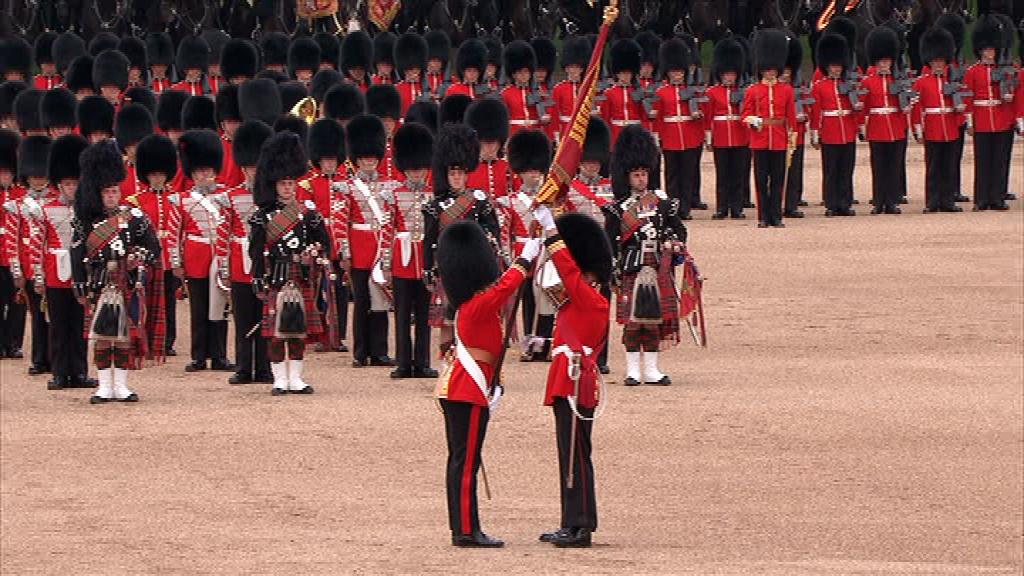 |
The Escort has now become the 'Escort To the Colour'.
The parade
present arms to the strains of the National Anthem. The Escort
now moves through the ranks of the assembled guards in slow time
to the tunes ![]() 'Escort to
The Colour'
and the
'Escort to
The Colour'
and the ![]() 'Grenadiers
Slow March'
(used to march grenadiers back to barracks after changing the
guard).
'Grenadiers
Slow March'
(used to march grenadiers back to barracks after changing the
guard).
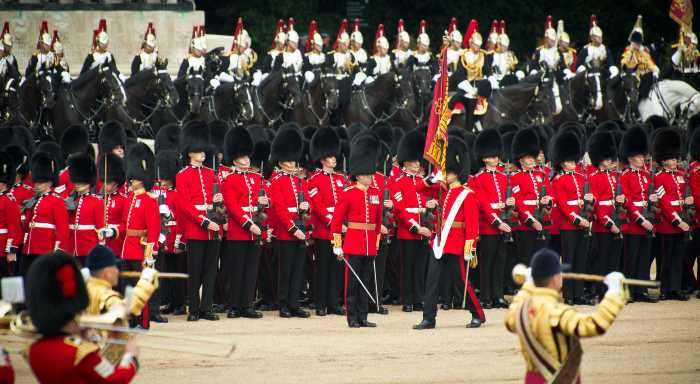
(Photo courtesy of
Sgt. Paul Shaw LBIPP (Army))
Click video to watch 'The
Trooping of the Colour'
The Massed Bands, at this point, carry out the intricate "Spin Wheel" manoeuvre which appears in no drill book or manual of ceremonial, but is passed down from memory to each new generation of bandsmen. (see panel below)
The 'Escort To the Colour', having cleared No. 2 Guard resumes its place on the right of the line.
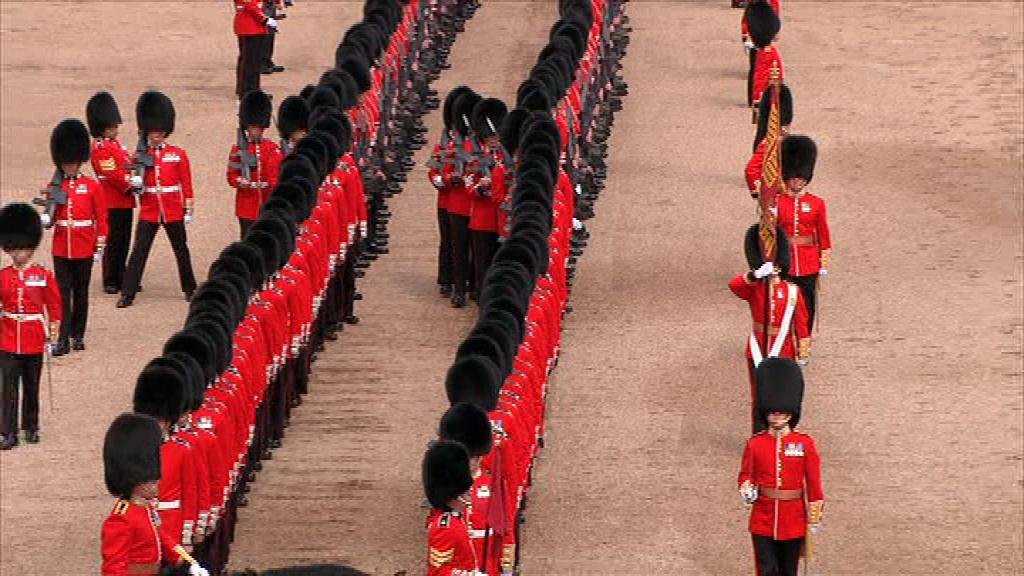
The Escort now presents arms and the parade is then ordered to slope arms and the officers ordered to take posts.
| The Massed Bands' Spin-Wheel
Manoeuvre
Many spectators think that the part played by the Foot Guards' Bands has remained unchanged over the years, but with the formation of the Regimental Bands and Corps of Drums of the Irish and Welsh Guards (and the Pipes and Drums of the former) it became impossible for the mass of men, numbering well over 400, to manoeuvre in the customary manner and, as a result, the 'Spin-Wheel' was invented. It is the responsibility of the Garrison Sergeant Major to ensure by rehearsals that it is executed correctly. Lieutentant Colonel Rodney Bashford, late Director of Music Grenadier Guards, described it thus: "A 'wheel' is not an easy manoeuvre with even a small body of troops, and with a block of 400 men the normal wheel is impossible. The massed band therefore pivots on its own centre, so that certain outer ranks and files march long distances in a hurry while the centre and inner ranks loiter with extreme intent, or merely mark time. Yet others not only step sideways but backwards as well. This highly complex movement is called a 'spin-wheel', the details of which can be found in no drill book or manual of ceremonial. Its complexity defies description, and if the truth were known, many of the participants know not whither they go or, on arrival, how they got there. The spin-wheel is almost an art form and each performance of it, although similar in essentials, is different in detail. Most of the performers are adjusting their actions to suit the needs of the spin-wheel of the moment, having adjusted their movements quite otherwise on other occasions."
"The public is, hopefully, unaware of all this, and unless forewarned will likely as not miss the action completely, for it all looks so simple and inevitable from a spectator's seat. The public is, also hopefully, unaware of events in the epicentre of that elegantly spinning body of men. The spectatar hears only the music, but those on parade in the vicinity of the spin-wheel are aware of the deafening cacophony of crotchets and quavers plus much shouting and gesticulating as the five directors of music, hidden within the ranks, and the senior NCOs bid to control the wanderings of the less experienced brethren, lost to the world in what to them must resemble a super-orchestrated fairground roundabout gone mad. And as this spinning, roaring mass slowly gains equilibrium the raw ones are suddenly, frighteningly conscious of something amiss - a slight miscalculation perhaps on someone's part - for half the band is facing north, and the other south. Then a distant, ghostly scream, seemingly emanating from a euphonium to the north, effects an about turn by the eastern half. And all is finished." "The massed bands, corps of drums, and pipes and drums of Her Majesty's Guards Division have changed direction." Spin
Wheel - the inside view: |